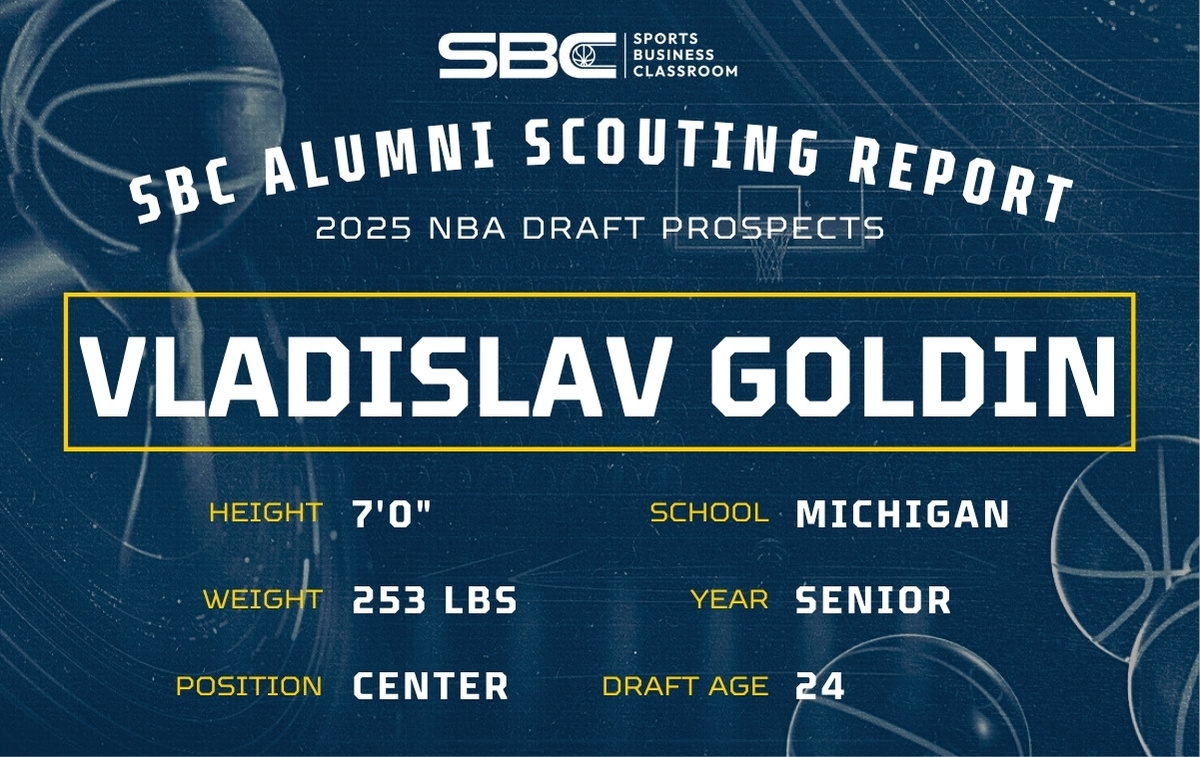
[The following scouting report is part of a series on potential 2025 draft prospects from Sports Business Classroom alumni.]
Vladislav Goldin
Frame: 7’0″, 253 lbs
Position: Center
Team: Michigan
2025 Draft Age: 24
Stats via Sports Reference
Offense
Goldin is an old-school, post-oriented big with a strong physical presence in the paint. He operates as a traditional five, living on the block, while making hustle plays. With his 7’5¼” wingspan and a 9’3″ standing reach, Goldin’s size is imposing, and his frame is mature—a big body who knows how to use it. Conditioning is a strong suit, and he consistently showed the stamina to run the floor back and forth.
Despite leading Michigan in scoring this season, Goldin functioned as a dependable glue guy within Coach Dusty May’s system. He did the physical work inside, screening, sealing, and cleaning the offensive glass, where his 12.5 percent career offensive rebound rate stands out. He’s especially impactful as a second-chance scorer and transition rim-runner, consistently making an effort to beat defenses down the court.
While not a natural scorer with elite touch, he developed some intriguing tools late in college. Most notably, Goldin extended his range during his senior season, hitting 11-of-33 from three and improving to a respectable 73 percent from the foul line on nearly six attempts per game. His mechanics look serviceable, and he showed composure at the stripe in key moments, hinting at some untapped shooting upside that could unlock more value in a spacing-based offense.
Despite his physical tools, Goldin’s finishing can be inconsistent due to his below-the-rim style. He can get his shot blocked at the rim more often than expected for a player his size, especially when forced to gather in traffic. He also led his team in blocked field goal attempts this season, which is worrisome. He’s not a high-level ball handler or decision-maker under pressure, either; opposing defenses were able to speed and trap him up to force turnovers. That said, he adds value by playing within himself—using his body to make space, flashing a confident push shot on short rolls, and embracing the dirty work without demanding touches.
Defense
Defensively, Goldin profiles as a traditional drop-coverage big. He plays upright and physical, using his frame to anchor the paint and absorb contact. He’s not an explosive leaper or dynamic weak-side presence, but his sheer size allows him to alter shots around the rim. When defending the post, he does well holding his ground against most matchups, though more polished or deceptive post players like Auburn’s Johni Broome have found ways to outmaneuver him with footwork and counters.
His rim protection is solid, though more a product of size and positioning than vertical pop or reactive shot-blocking. He does a commendable job staying down and contesting with a wide base and disciplined hands, rarely chasing blocks out of his zone. Still, he lacks the quick-twitch recovery ability or lateral mobility to switch onto ball handlers or cover significant ground. He struggles when pulled into space on closeouts or pick-and-pop actions, where he becomes a target due to his limited foot speed.
On the defensive glass, his production hasn’t quite matched his offensive rebounding prowess. He’s effective in his zone but limited outside, which may cap his impact in more spread-out NBA schemes. That said, he consistently gets back in transition, doesn’t cheat effort-wise, and rarely takes plays off—an essential signal of professionalism and buy-in.
Looking Ahead
Goldin has the size, reach, and strength to bang with NBA bigs from day one, and that alone gives him a pathway to minutes as a reserve five. But projecting him forward requires context, as much of his college dominance stemmed from physical advantages and system familiarity. There are questions about how much of that translates, especially when facing quicker or more skilled opponents. He’s a “Dusty May guy”—humble, hard-working, tough—but whether his impact holds outside that ecosystem remains to be seen.
That said, there’s a clear role for him: a paint protector who competes, finishes plays, and provides low-maintenance value as a screener and rebounder.
His development arc is encouraging, going from five minutes a game at Texas Tech to a key cog in March runs. Goldin carries himself with the kind of seriousness NBA teams look for in rotation bigs. If the touch continues to come along and he learns to operate with more poise under pressure, there’s a viable future in the NBA.
At worst, he’s Trey Jemison/Luka Garza journeyman archetype—someone who could bounce around on minimum deals or earn call-ups via the G League. At best, with the right development path, he could resemble the likes of Jakob Pöltl, Ivica Zubac, or Isaiah Hartenstein—physically impactful, intelligent screeners and finishers who help teams win. His personality suggests he won’t waste an opportunity.


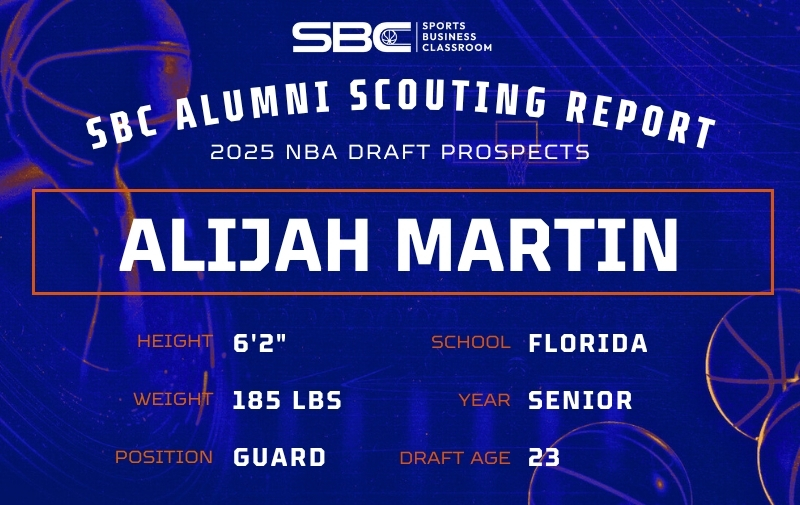
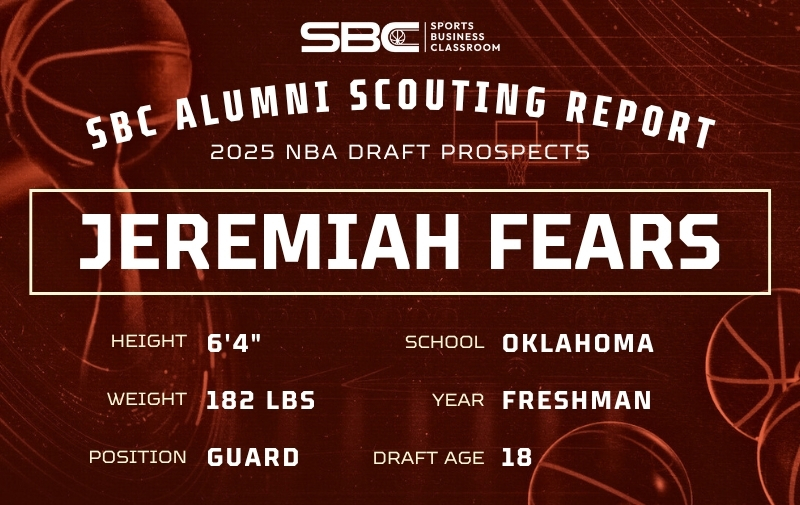
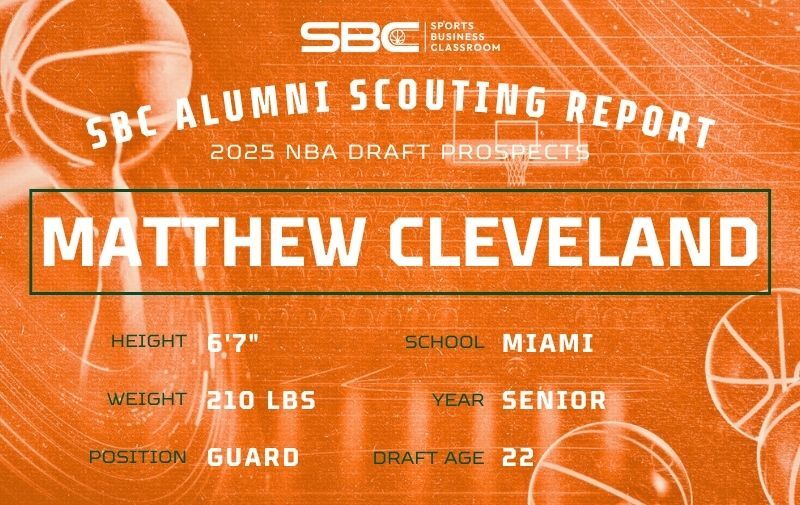
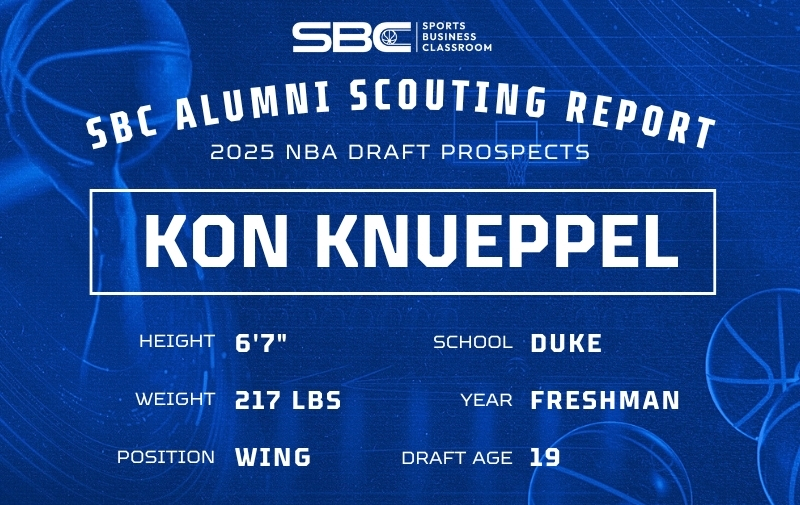
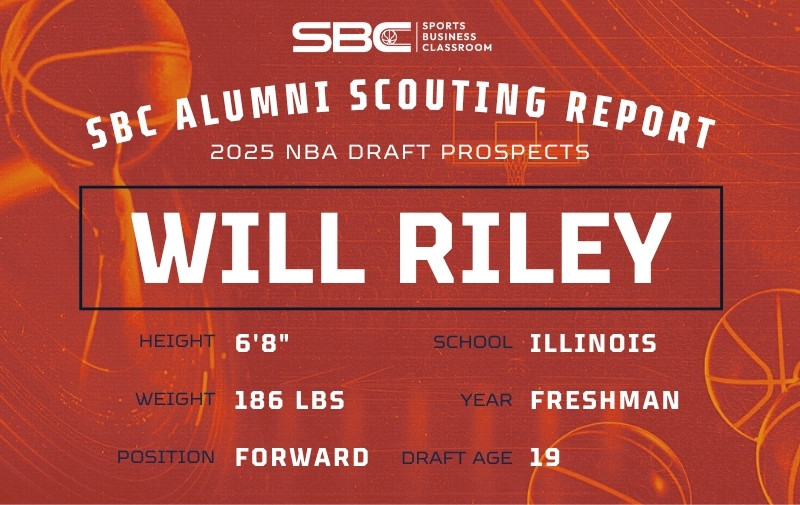
Leave A Comment